Animals - Animales: Iditarod Trail Sled Dog Race 2013 - Carrera de rastro de perros de trineo de Iditarod - Alaska - The Boston Globe - 31 photos
Posted by Ricardo Marcenaro | Posted in Animals - Animales: Iditarod Trail Sled Dog Race 2013 - Carrera de rastro de perros de trineo de Iditarod - Alaska - The Boston Globe - 31 photos | Posted on 23:02
Iditarod Trail Sled Dog Race 2013
The 41st Iditarod
Trail Sled Dog Race came to an end yesterday in Nome, Alaska. Mitch
Seavey, 53, with his team of ten dogs, became the oldest musher ever to
win the 1,000-mile race across the Alaskan wilderness in just over 9
days, 7 hours. Last year his son, Dallas, became he youngest winner at
25. His winnings included $50,000 and a new truck. The race is a
remaking of the freight route to Nome which pays tribute to the role
sled dogs played in the settlement of Alaska. -- Lloyd Young ( 31 photos total)

Michael
Williams, Jr., greets fans along Cordova Street during the ceremonial
start of the Iditarod Trail Sled Dog Race on March 2 in Anchorage,
Alaska. The competitive portion of the 1,000-mile race is scheduled to
begin Sunday in Willow, Alaska. (Bill Roth/Anchorage Daily News via
Associated Press)

3
Four-time
Iditarod champion Jeff King drives his dog team down 4th Avenue during
the ceremonial start of the Iditarod Trail Sled Dog Race on March 2 in
Anchorage. (Bill Roth/Anchorage Daily News via Associated Press) 
4
Dogs
wait to run in the Iditarod Trail Sled Dog Race on March 3 in Willow,
Alaska. 65 teams will be making their way through punishing wilderness
toward the finish line in Nome on Alaska's western coast 1,000 miles
away. (Rachel D'Oro/Associated Press) 
5
Richie
Diehl is offered a beverage as his team heads into the wilderness after
the re-start of the race in Willow, Alaska, on March 3. From Willow,
the race runs for almost 1000 miles as it crosses the state. (Nathaniel
Wilder/Reuters) 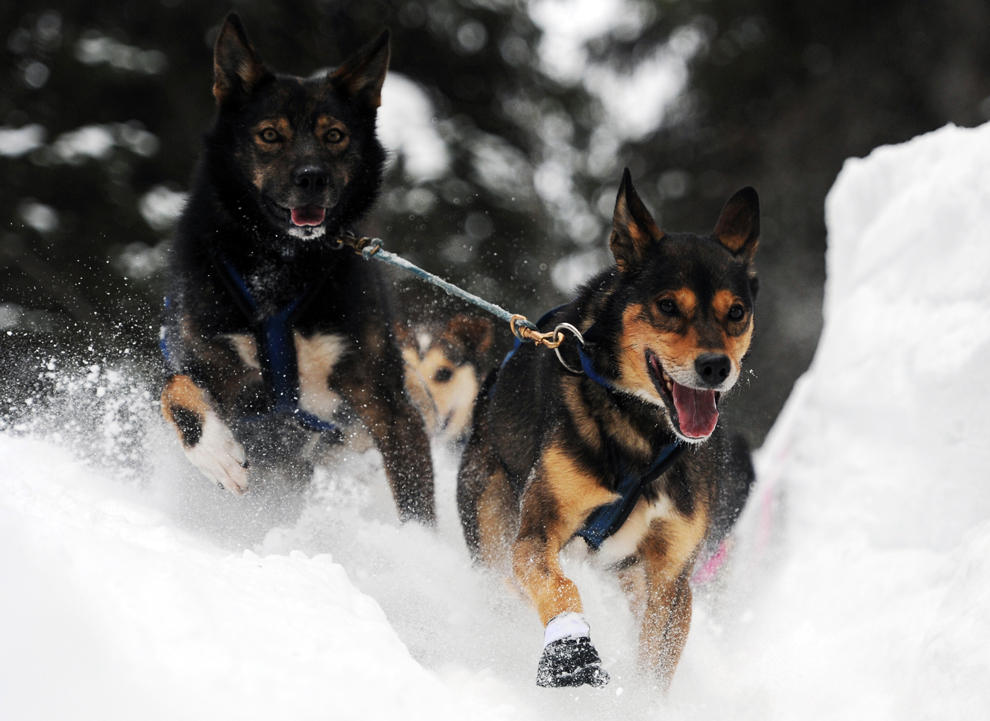
6
Leaders
in Jessica Hendricks's dog team negotiate a steep drop off in the trail
after leaving the Finger Lake checkpoint in Alaska during the Iditarod
Trail Sled Dog Race on March 4. (Bill Roth/The Anchorage Daily News via
Associated Press) 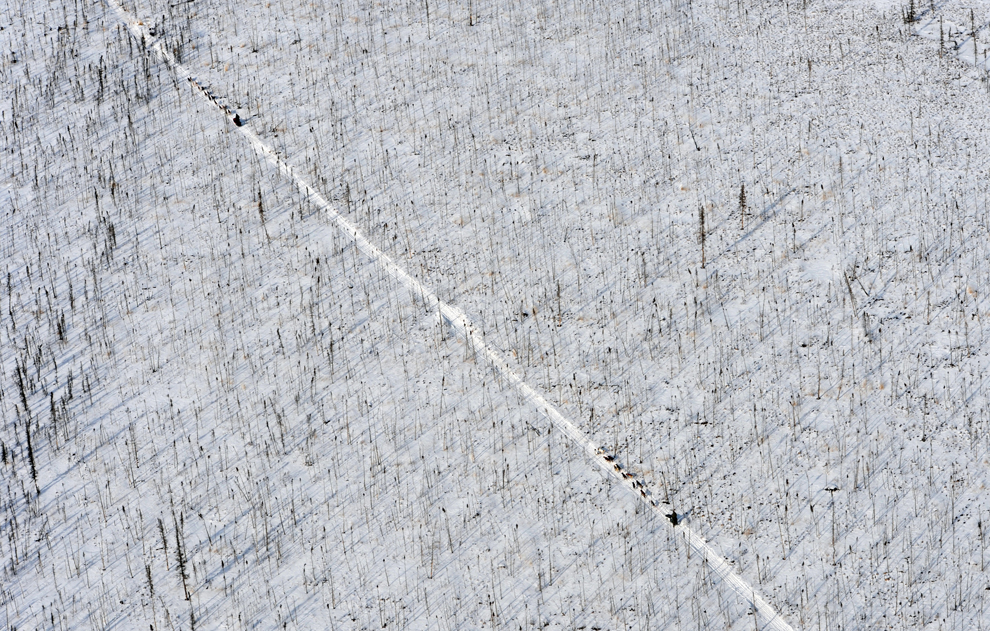
7
Mushers
work their way across the Farewell Burn in Alaska during the Iditarod
Trail Sled Dog Race on March 5. (Bill Roth/The Anchorage Daily News via
Associated Press) 
8
Christine
Roalofs prepares to rest with her dogs at the Finger Lake checkpoint in
Alaska during the Iditarod Trail Sled Dog Race on March 4. (Bill
Roth/The Anchorage Daily News via Associated Press) 
9
Aliy
Zirkle applies ointment to a paw while at the checkpoint in Unalakleet
on March 10. (Bill Roth/Anchorage Daily News via Associated Press) 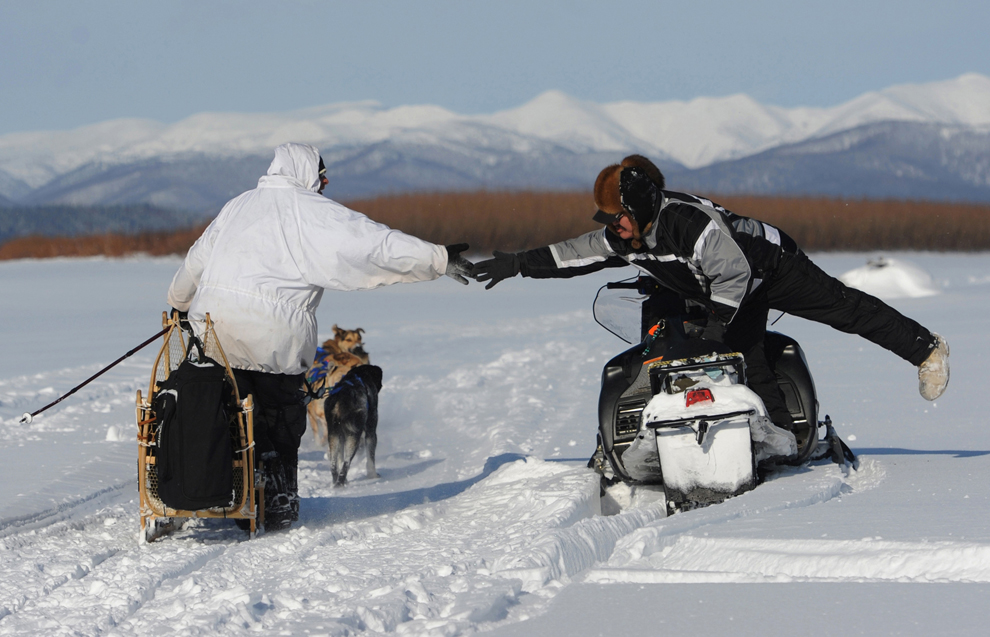
10
Four-time
Iditarod champion Martin Buser reaches out to long-time friend and
Nulato checker Larry Esmailka who drove down the Yukon River to help out
with the race on March 9. Buser was about 5 miles away from the Kaltag
checkpoint and leading the sled dog race. (Bill Roth/Anchorage Daily
News via Associated Press) 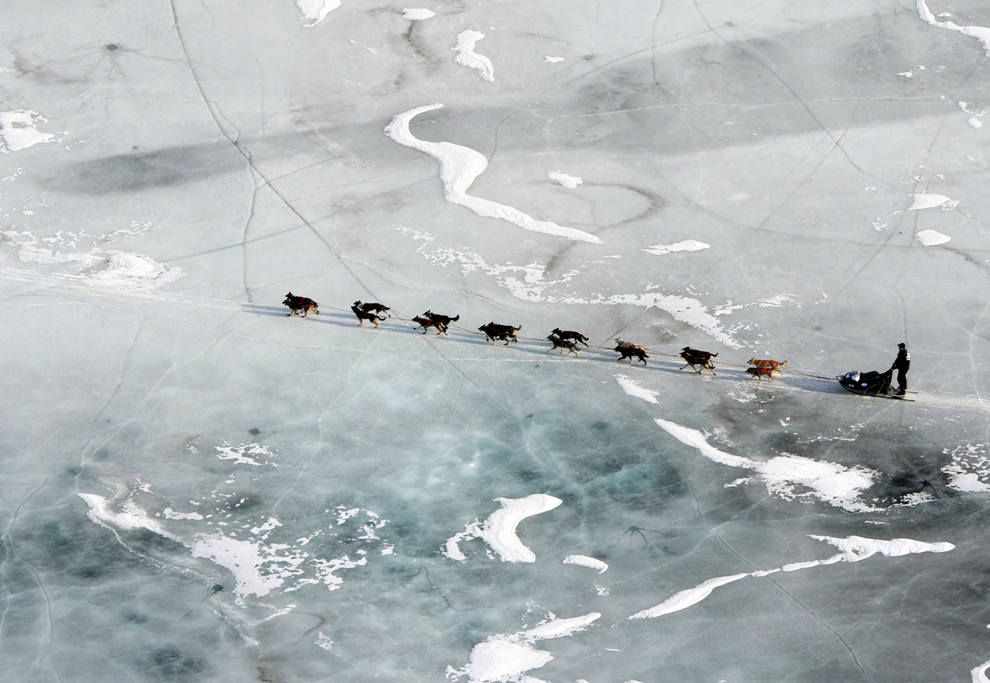
11
A
musher and dog team cross the ice between the Rohn and Nikolai
checkpoints on March 5. (Bill Roth/The Anchorage Daily News via
Associated Press) 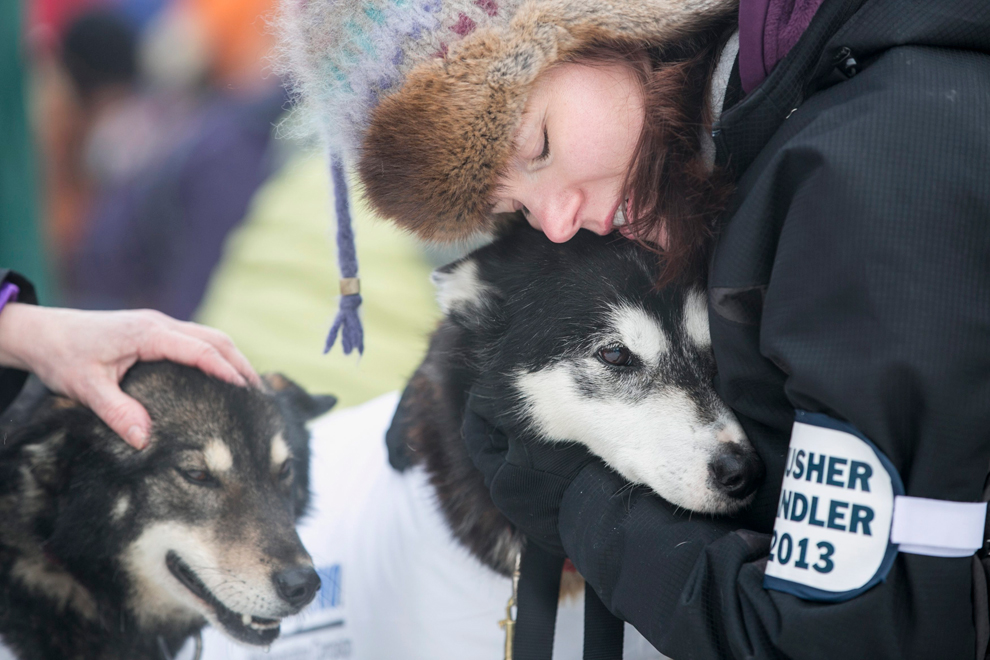
12
A
musher handler for Ed Stielstra's team hugs one of the dogs before
lining up for the ceremonial start to the race in downtown Anchorage,
Alaska, on March 2. (Nathaniel Wilder/Reuters) 
13
Four-time
Iditarod champion Martin Buser wipes his face after arriving first at
the Yukon River in Anvik, Alaska during the Iditarod Trail Sled Dog
Race, early March 8. (Bill Roth/Anchorage Daily News via Associated
Press) 
14
Students
at Blackwell School in Anvik, Alaska, watch an interview with Lance
Mackey as the Yukon River community anticipates the arrival of the first
Iditarod Trail Sled Dog Race mushers on March 7. (Bill Roth/Anchorage
Daily News via Associated Press) 
15
Veterinarian
Lee Morgan examines a sled dog at the Finger Lake checkpoint in Alaska
during the Iditarod Trail Sled Dog Race on March 4. (Bill Roth/The
Anchorage Daily News via Associated Press) 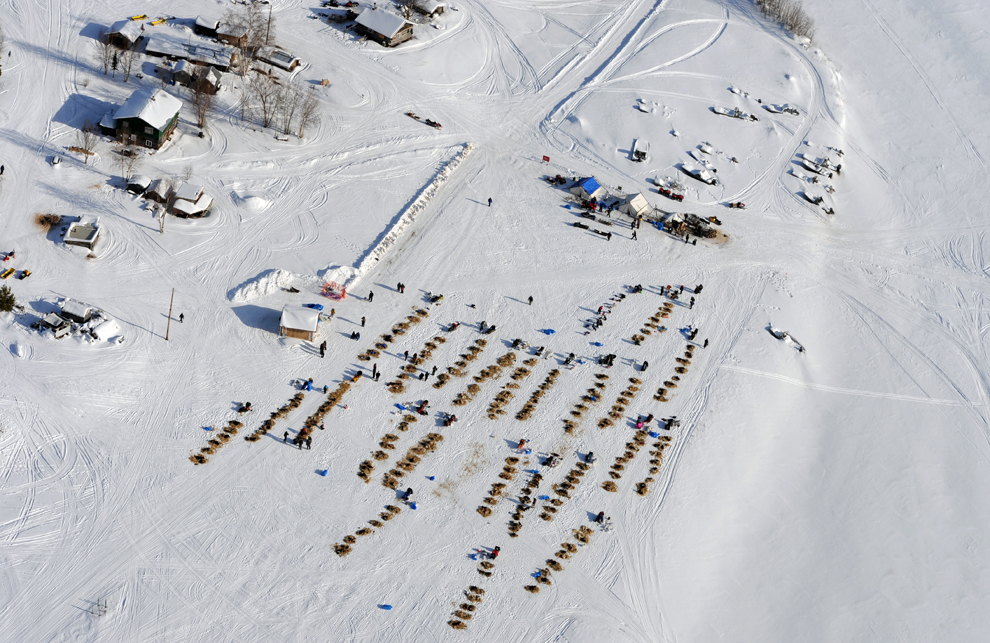
16
Dog
teams rest at the village of Nikolai along the Kuskokwim River in
Alaska during the race on March 5. (Bill Roth/The Anchorage Daily News
via Associated Press) 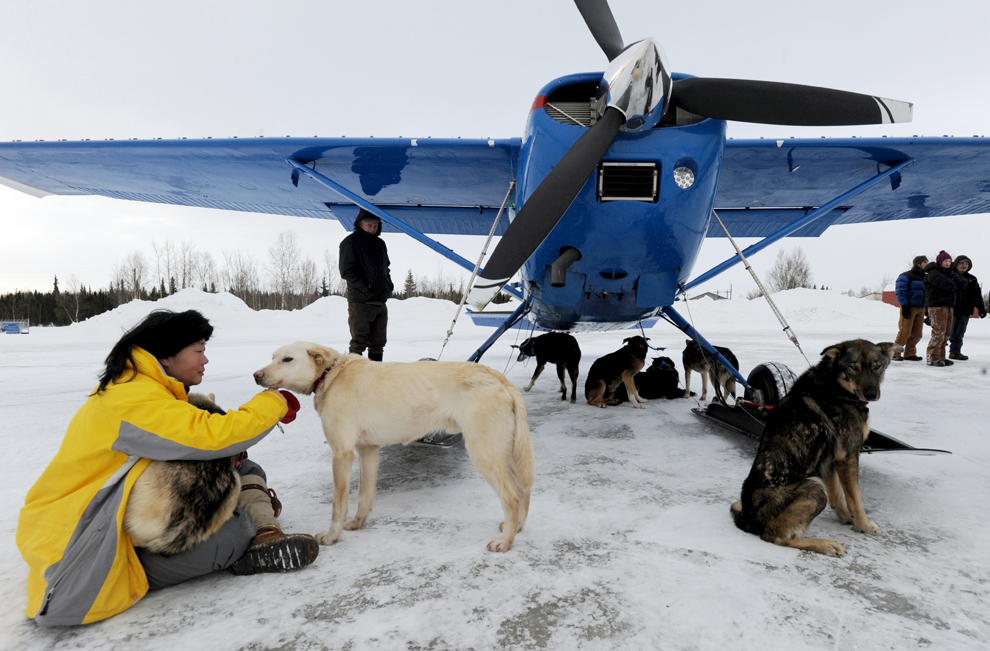
17
Kidron
Flynn sits with dropped dogs getting ready to be loaded in an Iditarod
Air Force plane during the race on March 6. (Bill Roth/The Anchorage
Daily News via Associated Press) 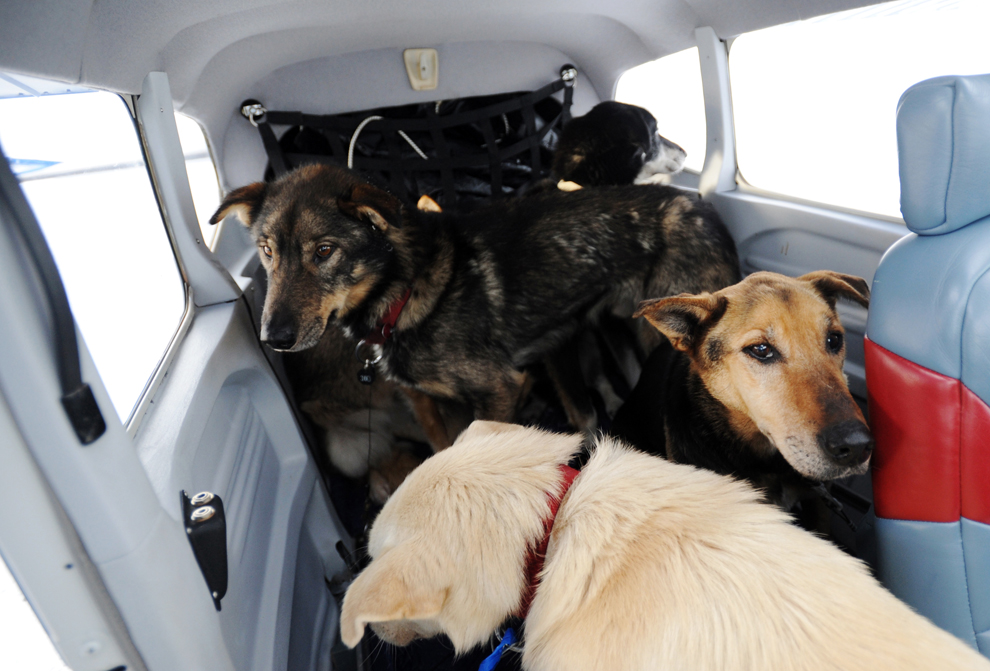
18
Dropped
dogs are loaded into an Iditarod Air Force plane to be flown to McGrath
during the Iditarod Trail Sled Dog Race on March 6. (Bill Roth/The
Anchorage Daily News via Associated Press) 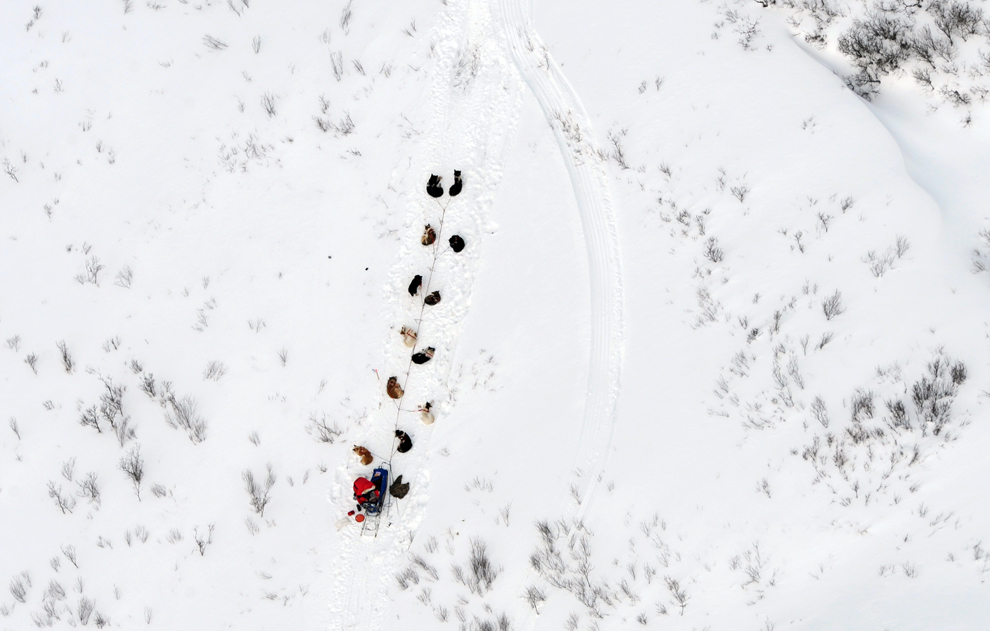
19
A
musher and dog team rest between the Rohn and Nikolai checkpoints in
Alaska on March 5. (Bill Roth/The Anchorage Daily News via Associated
Press) 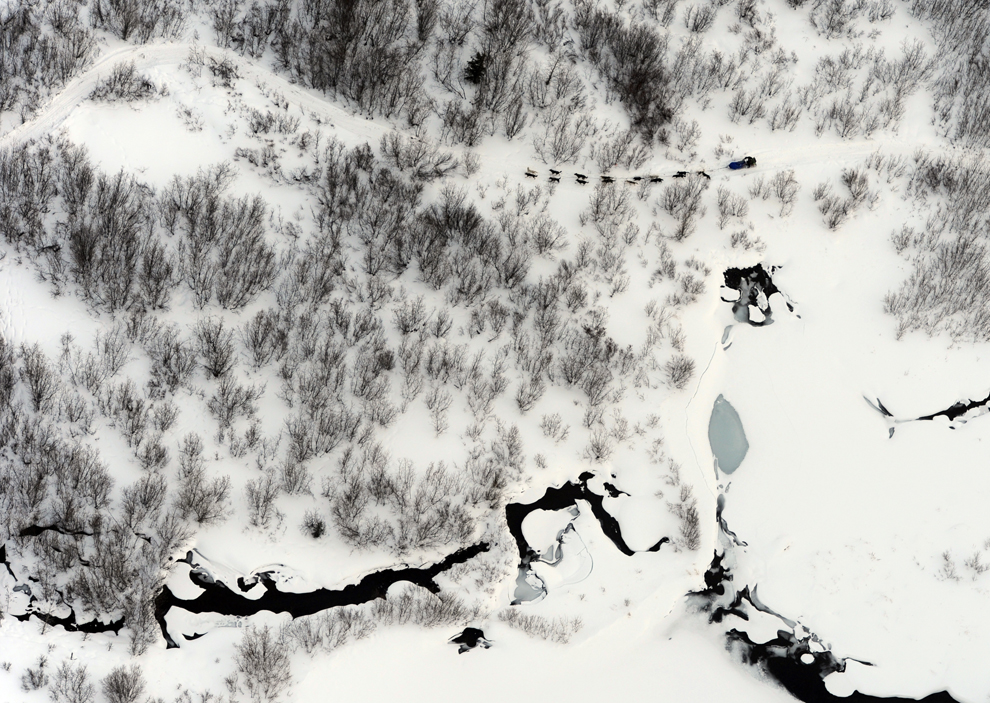
20
Musher
Christine Roalofs drives her team through the Happy River Gorge en
route to the Rohn checkpoint on March 5. (Bill Roth/The Anchorage Daily
News via Associated Press)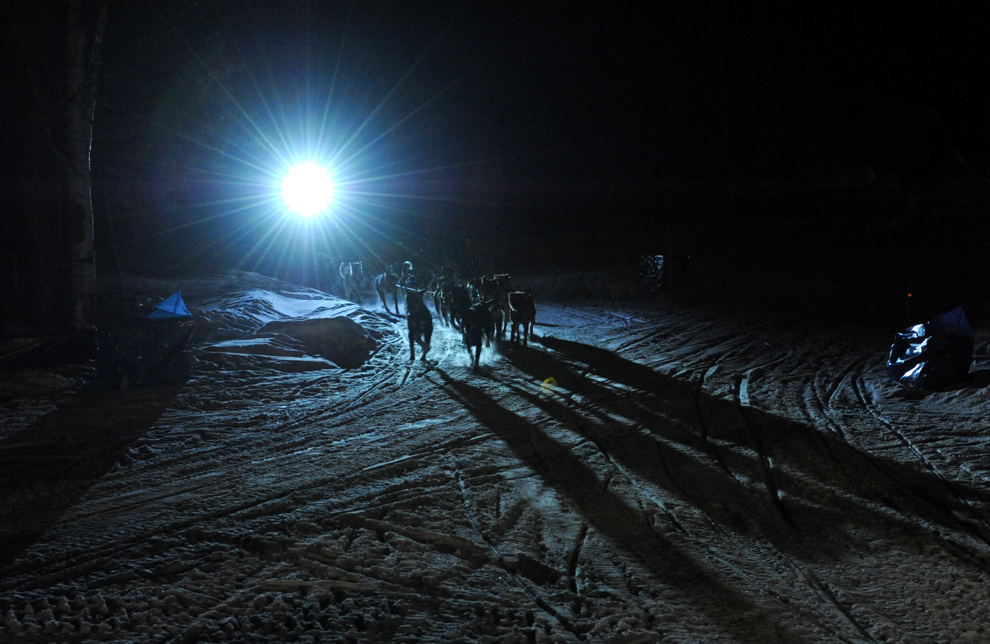
21
Four-time
Iditarod champion Martin Buser arrives first at the Yukon River in
Anvik, Alaska on, March 8. (Bill Roth/Anchorage Daily News via
Associated Press)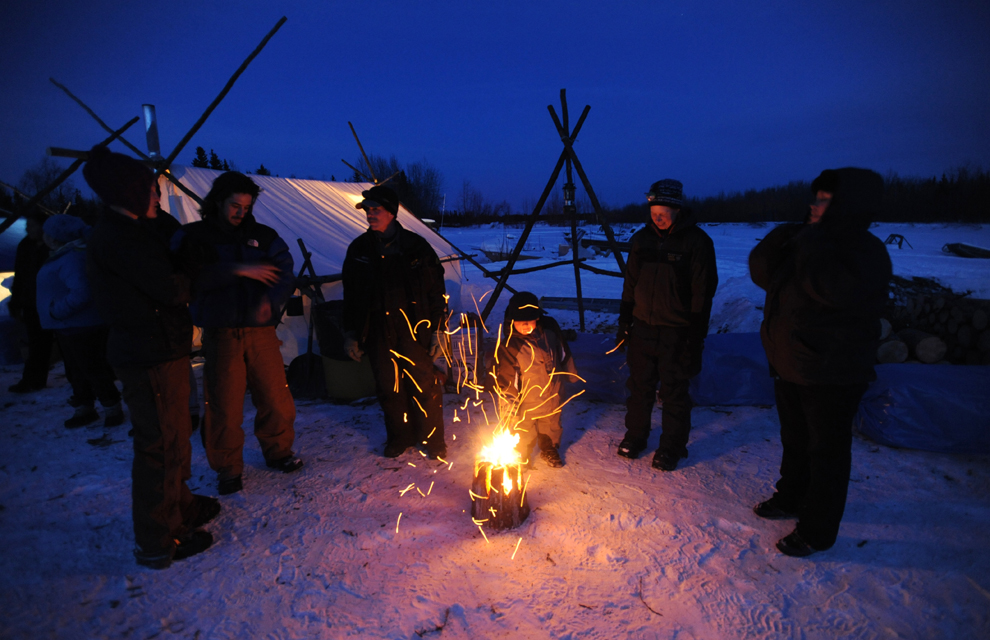
22
Four-year-old
Kayden Alexie pokes a fire with a stick as people gather in the village
of Nikolai, Alaska, to watch and help with dog teams pulling into the
checkpoint on March 5. (Bill Roth/Anchorage Daily News via Associated
Press) 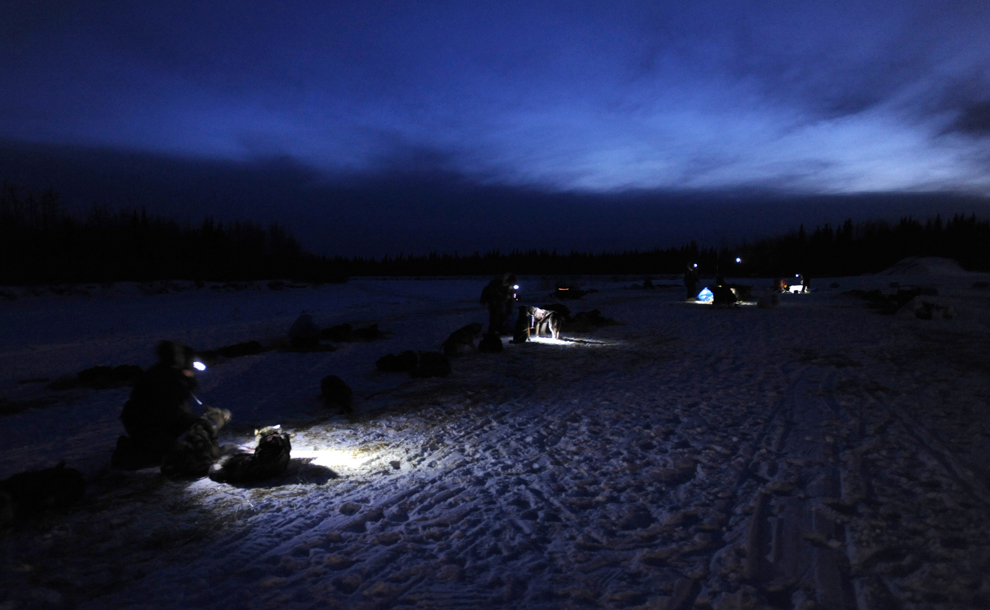
23
Headlamps
provide light for mushers and veterinarians working with sled dogs in
the village of Nikolai, Alaska on March 5. (Bill Roth/Anchorage Daily
News via Associated Press) 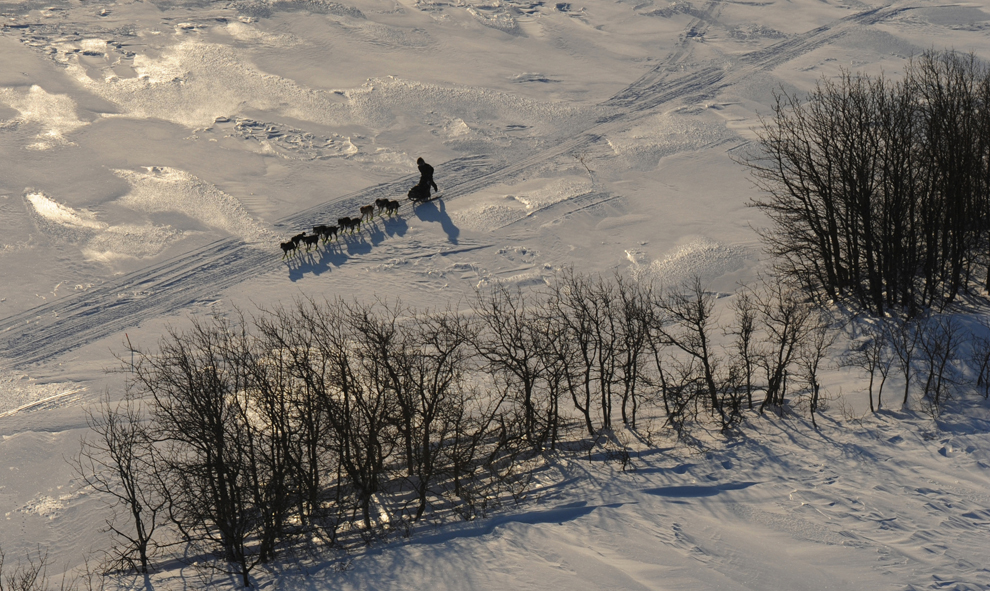
24
A
musher kicks while traveling to Koyuk during the Iditarod Trail Sled
Dog Race on March 11. (Bill Roth/The Anchorage Daily News via Associated
Press) 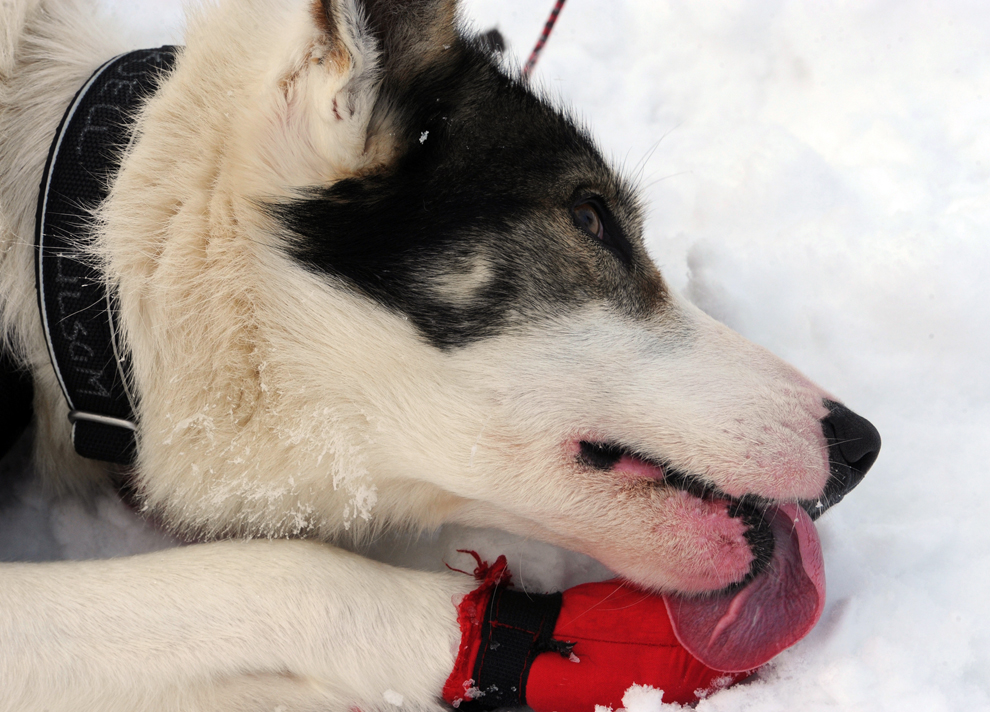
25
A
sled dog in the team of Norwegian musher Joar Leifseth Ulsom removes
snow and ice on a bootie after arriving in Unalakleet on March 10. (Bill
Roth/Anchorage Daily News via Associated Press) 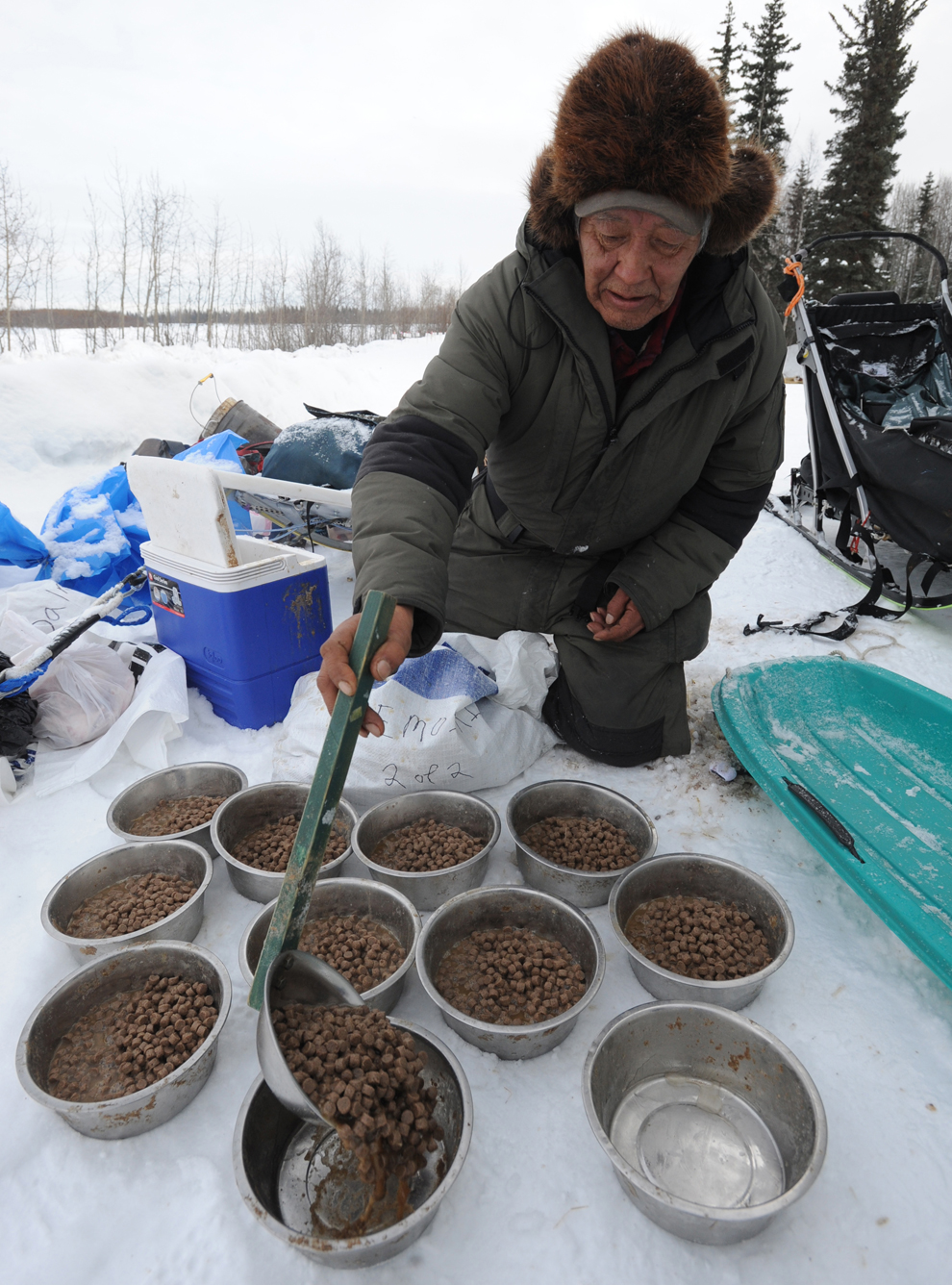
26
Veteran
Iditarod musher Rudy Demoski prepares food for his dog team at the
McGrath checkpoint on March 6 at Nikolai Airport in Nikolai, Alaska.
(Bill Roth/The Anchorage Daily News via Associated Press) 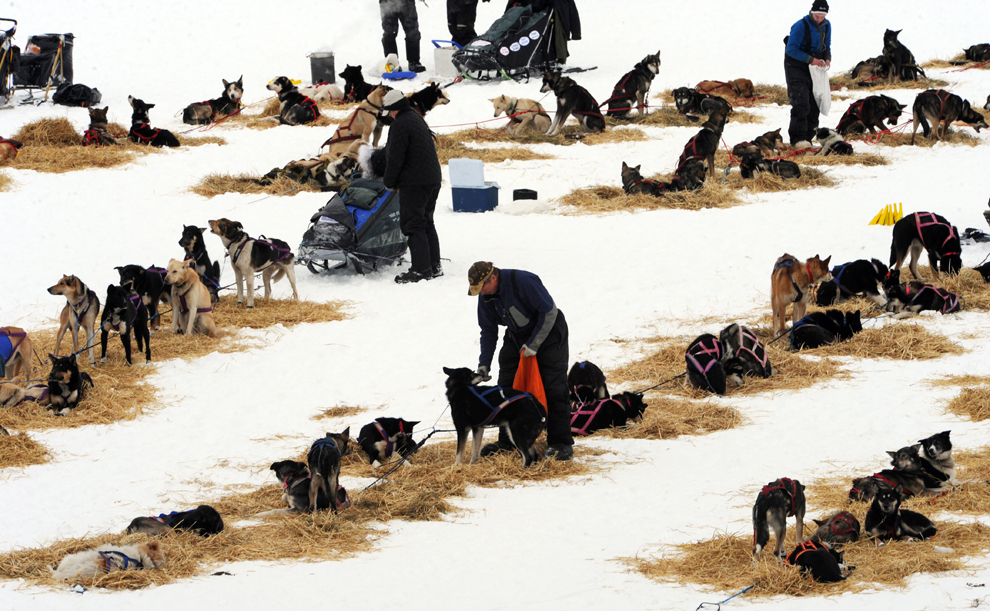
27
Musher
Sonny Lindner, center, gives snacks to his dogs at the Finger Lake
checkpoint on March 4. (Bill Roth/The Anchorage Daily News via
Associated Press) 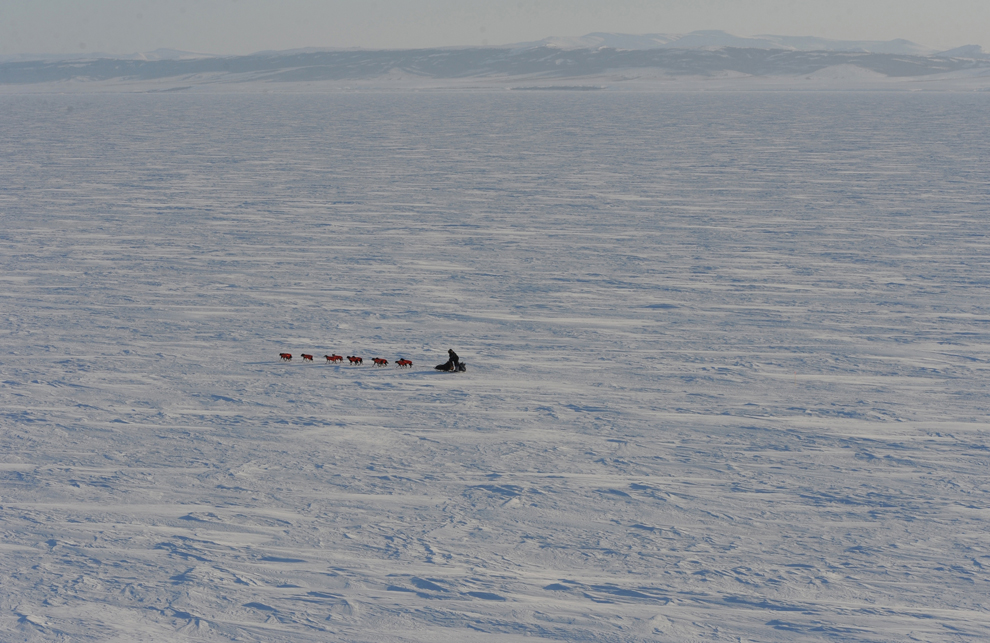
28
A
musher travels across Norton Sound on their way to Koyuk during the
Iditarod Trail Sled Dog Race on March 11. Alaska's famous 1,000-mile
Iditarod Trail Sled Dog Race has come down to a furiously contested
sprint among veterans, with one seasoned musher grabbing the lead from
another Monday and several others within striking distance. (Bill
Roth/The Anchorage Daily News via Associated Press) 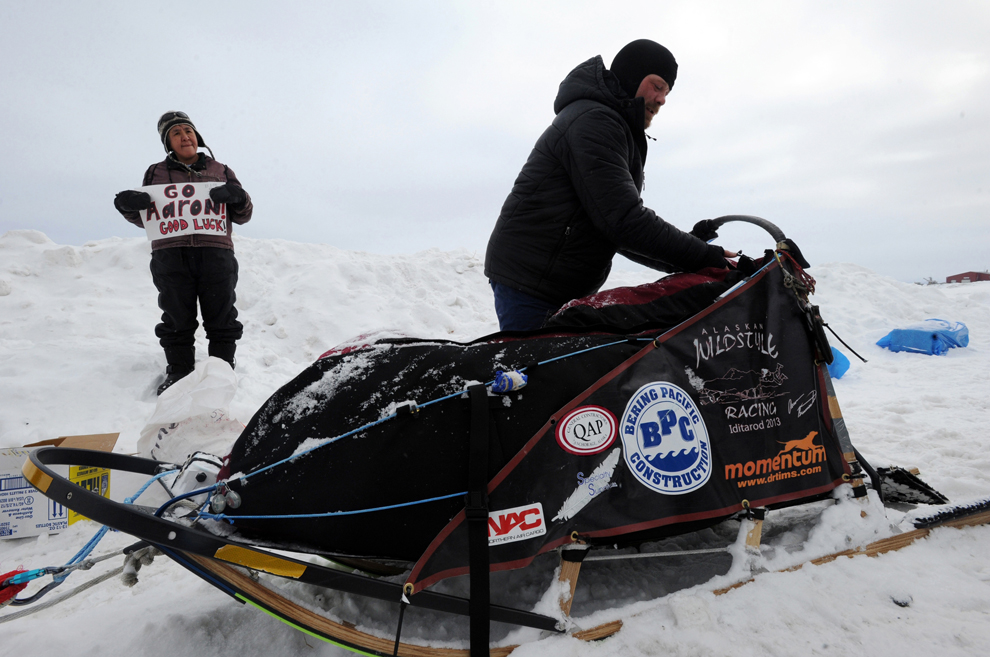
29
Aaron Burmeister packs his sled prior to leaving Unalakleet on March 10. (Bill Roth/Anchorage Daily News via Associated Press) The Iditarod Trail Sled Dog Race is an annual long-distance sled dog race run in early March from Anchorage to Nome. Mushers and a team of 16 dogs, of which at least 6 must be on the towline at the finish line, cover the distance in 9–15 days or more.[1] The Iditarod began in 1973 as an event to test the best sled dog mushers and teams but evolved into today's highly competitive race. The current fastest winning time record was set in 2011 by John Baker with a time of 8 days, 19 hours, 46 minutes, and 39 seconds.[2] As of 2012, Dallas Seavey is the youngest musher to win the race. Seavey is the third generation in his family to race. In the race were Mitch Seavey, Dallas' father and 2004 and 2013 race winner, and Dan Seavey, Dallas' grandfather and one of the organizers of the first races. His second race win, on March 13, 2013, at the age of 53, made Mitch Seavey the oldest person to ever win the race.
Teams frequently race through blizzards causing whiteout conditions, sub-zero temperatures and gale-force winds which can cause the wind chill to reach −100 °F (−73 °C). A ceremonial start occurs in the city of Anchorage and is followed by the official restart in Willow, a city in the south central region of the state. The restart was originally in Wasilla, but because of too little snow, the restart was permanently moved to Willow in 2008.[3] The trail runs from Willow up the Rainy Pass of the Alaska Range into the sparsely populated interior, and then along the shore of the Bering Sea, finally reaching Nome in western Alaska. The trail is through a harsh landscape of tundra and spruce forests, over hills and mountain passes, and across rivers. While the start in Anchorage is in the middle of a large urban center, most of the route passes through widely separated towns and villages, and small Athabaskan and Inupiat settlements. The Iditarod is regarded as a symbolic link to the early history of the state and is connected to many traditions commemorating the legacy of dog mushing.
The race is the most popular sporting event in Alaska, and the top mushers and their teams of dogs are local celebrities; this popularity is credited with the resurgence of recreational mushing in the state since the 1970s. While the yearly field of more than fifty mushers and about a thousand dogs is still largely Alaskan, competitors from fourteen countries have completed the event including the Swiss Martin Buser, who became the first international winner in 1992.
The Iditarod received more attention outside of the state after the 1985 victory of Libby Riddles, a long shot who became the first woman to win the race. Susan Butcher became the second woman to win the race and went on to dominate for five whole years. Print and television journalists and crowds of spectators attend the ceremonial start at the intersection of Fourth Avenue and D Street in Anchorage and in smaller numbers at the checkpoints along the trail.
Name
The race's namesake is the Iditarod Trail, which was designated as one of the first four National Historic Trails in 1978. The trail in turn is named for the town of Iditarod, which was an Athabaskan village before becoming the center of the Inland Empire's Iditarod Mining District in 1910, and then turning into a ghost town at the end of the local gold rush. The name Iditarod may be derived from the Athabaskan haiditarod, meaning "far distant place".
More: Here, in Wikipedia
Animals - Animales: Iditarod Trail Sled Dog Race 2013 - Carrera de
rastro de perros de trineo de Iditarod - Alaska - The Boston Globe - 31
photos


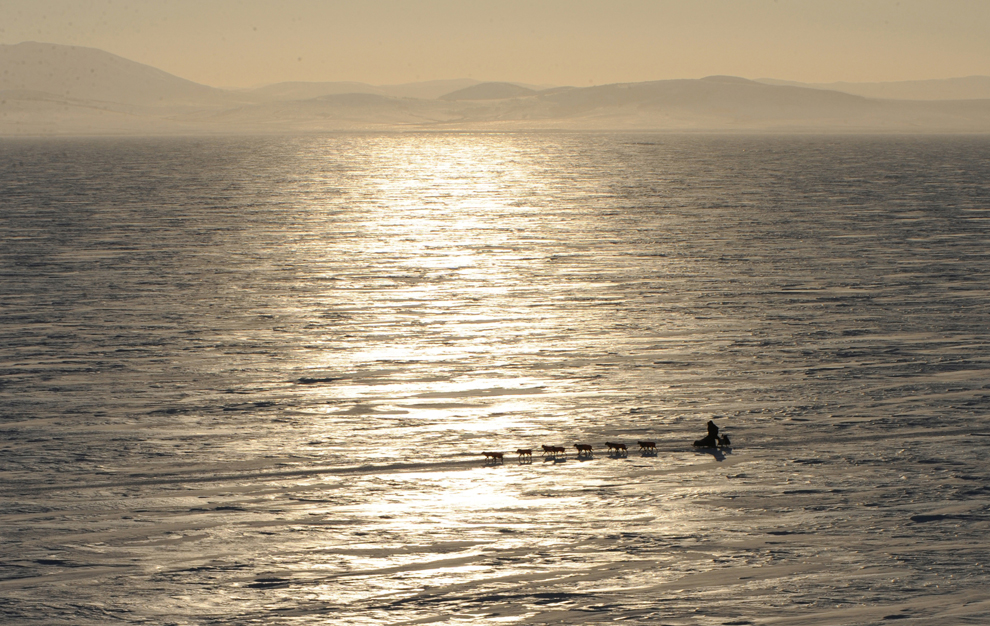


Comments (0)
Publicar un comentario